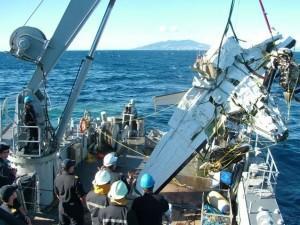Media Release: Civil Aviation Authority, Friday, 28 June 2013

Raglan Beechcraft Baron fatal air-accident – interim report released by CAA
The Civil Aviation Authority today released its interim factual report into the fatal Easter weekend accident off the coast of Raglan, which claimed the lives of 2Degrees CEO Eric Hertz and his wife Kathy. The report gives a more detailed account of the circumstances of the accident, and highlights areas of interest for the CAA in its on-going investigation.
Radar evidence shows that 30 minutes into the flight, after reaching its cruise altitude of 18,000 feet, the aircraft’s groundspeed decreased sharply. The aircraft began a ‘high rate of descent’, and after approximately one and a half minutes, disappeared from radar. In transmissions to Air Traffic Control (ATC) the pilot indicated that he had an emergency and was experiencing problems with both engines.
Acting Director of Civil Aviation, Chris Ford said “The operation to locate and recover the wreckage from the seabed was challenging. The CAA provided assistance to the Coastguard, Navy and Police to identify the aircraft and help bring it to the surface as part of a multi-agency operation. The level of cooperation was outstanding.”
The aircraft was found on the seabed, 59 metres below the surface, inverted but largely intact.
“Examination of the aircraft’s propellers indicated that they were under little or no power at the time the aircraft impacted the water. The propeller angles were in a position usually associated with a cruise setting.” Mr Ford said.
The investigation is continuing and will include further examination and analysis of the following areas:
• technical and maintenance history associated with the aircraft
• the pilot’s background and experience
• analysis of Air Traffic Controller voice recording
• weight and balance calculations
• flight aerodynamics
• regulations relating to foreign aircraft permanently operating in New Zealand.
Commenting further on the report, Mr Ford said: “Our investigation into the accident continues, and we remain open minded as to the cause or causes. There is still a lot of work to be done.”
“The focus for the safety investigation is to identify lessons that can be learned and applied in order to prevent future accidents”. Mr Ford said.
Immediate safety issues and lessons
At this stage the investigation has not identified any immediate safety related issues or lessons.
As the aircraft was US registered the CAA have been liaising with the US National Transportation Safety Bureau and Federal Aviation Administration and will continue to do so. The CAA expects its final report into the accident to be released sometime this year.
NOTE: The CAA will not be making any further comment on this accident as it is subject to an on-going safety investigation.

